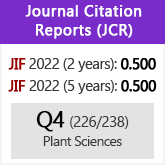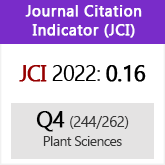Cardosoa, a new genus of the subtribe Anisopappinae (Athroismeae, Asteraceae)
DOI:
https://doi.org/10.3989/ajbm.2235Keywords:
Asteridae, Compositae, Tropical Africa, Angola, Huambo, systematics, taxonomy, morphologyAbstract
The new genus Cardosoa of the subtribe Anisopappinae (Athroismeae, Asteraceae) is described for the species Anisopappus athanasioides from the Angola Plateau. The diagnostic morphological characteristics of the new genus are discussed, and contrasted to those in Anisopappus its putative sister genus. The main distinguishing features of Cardosoa in Athroismeae are its inflorescence morphology, the bilabiate marginal florets, and shallowly zygomorphic disc florets.
Downloads
References
Anderberg, A.A. 1991. Taxonomy and phylogeny of the tribe Inuleae (Asteraceae). Plant Systematics and Evolution 176: 75-123. doi:10.1007/BF00937947
Anderberg, A.A. 1994. Tribe Inuleae. In: Bremer K. (ed.), Asteraceae. Cladistics & Clasification: 273-291. Portland, Oregon, Timber Press.
Anderberg, A.A. 2009. Athroismeae. In: Funk., V.A., Susanna, A., Stuessy, T.F. & Bayer, R.J. (eds.), Systematics Evolution and Biogeography of the Compositae: 681-688. IAPT, Vienna.
Anderberg, A.A. & Eldenäs, P. 2007. Tribe Inuleae. In: Kadereit, J. W. & Jeffrey, C. (eds.), The Families and Genera of Vascular Plants, vol. 8, Flowering Plants. Eudicots. Asterales: 374-391. Berlin, Springer.
Anderson, L.E. 1954. Hoyer’s solution as a rapid mounting medium for bryophytes. Bryologist 57: 242-247.
Brouillet, L., Lowrey, T.K., Urbatsch, L., Karaman-Castro, V., Sancho, G., Wagstaff, S. & Semple, J.C. 2009. Astereae. In: Funk., V.A., Susanna, A., Stuessy, T.F. & Bayer, R.J. (eds.), Systematics Evolution and Biogeography of the Compositae: 589-629. IAPT, Vienna.
Eldenäs, P. & Anderberg, A.A. 1996. A cladistic analysis of Anisopappus (Asteraceae: Inuleae). Plant Systematics and Evolution 199: 167-192. doi:10.1007/BF00984903
Eldenäs, P., Anderberg, A.A. & Källersjö, M. 1998. Molecular phylogenetics of the tribe Inuleae s. str. (Asteraceae), based on ITS sequences of nuclear ribosomal DNA. Plant Systematics and Evoution 210: 159-173. doi:10.1007/BF00985666
Eldenäs, P., Källersjö, M. & Anderberg, A.A. 1999. Phylogenetic placement and circumscription of tribes Inuleae s. str. and Plucheeae (Asteraceae): evidence from sequences of chloroplast gene ndhF. Molecular Phylogenetics and Evolution 13: 50-58. doi:10.1006/mpev.1999.0635 PMid:10508538
Kim, H.-G. & Jansen, R.K. 1995. ndhF sequence evolution and the major clades in the sunflower family. Proceedings of the Natural Academy of Sciences of the United States of America 92: 10379-10383. doi:10.1073/pnas.92.22.10379
Ortiz, S. & Paiva, J.A.R. 1995. Notes on African species of the genus Anisopappus Hook. & Arn. (Asteraceae). Botanical Journal of the Linnaean Society 117: 39-46.
Ortiz, S., Paiva, J.A.R. & Rodríguez-Oubiña, J. 1996. An outline of the genus Anisopappus Hook. & Arn. (Compositae). Anales del Jardín Botánico de Madrid 54: 378-391.
Panero, J.L. 2005. New combinations and infrafamilial taxa in the Asteraceae. Phytologia 87(1): 1-14.
Panero, J.L. 2007. Tribe Athroismeae. In: Kadereit, J.W. & Jeffrey, C. (eds.), The Families and Genera of Vascular Plants. Flowering Plants. Eudicots. Asterales 8: 395-400. Berlin, Springer.
Panero, J.L. & Funk, V.A. 2002. Toward a phylogenetic subfamilial classification for the Compositae (Asteraceae). Proceedings of the Biological Society of Washington 115(4): 909-922.
Panero, J.L. & Funk, V.A. 2008. The value of sampling anomalous taxa in phylogenetic studies: Major clades of the Asteraceae revealed. Molecular Phylogenetics and Evolution 47: 757-782. doi:10.1016/j.ympev.2008.02.011 PMid:18375151
Downloads
Published
How to Cite
Issue
Section
License
Copyright (c) 2010 Consejo Superior de Investigaciones Científicas (CSIC)

This work is licensed under a Creative Commons Attribution 4.0 International License.
© CSIC. Manuscripts published in both the printed and online versions of this Journal are the property of Consejo Superior de Investigaciones Científicas, and quoting this source is a requirement for any partial or full reproduction.All contents of this electronic edition, except where otherwise noted, are distributed under a “Creative Commons Attribution 4.0 International” (CC BY 4.0) License. You may read here the basic information and the legal text of the license. The indication of the CC BY 4.0 License must be expressly stated in this way when necessary.
Self-archiving in repositories, personal webpages or similar, of any version other than the published by the Editor, is not allowed.

















